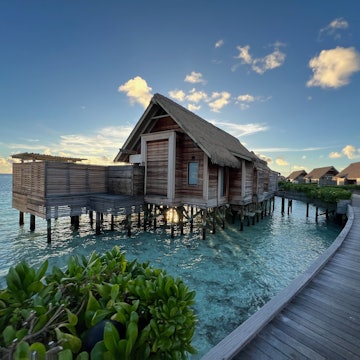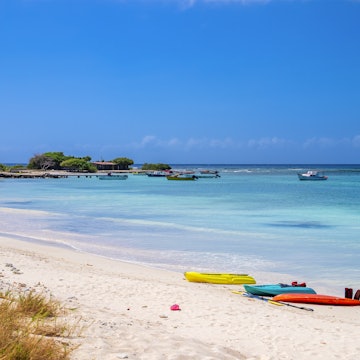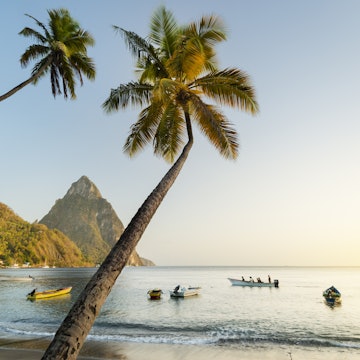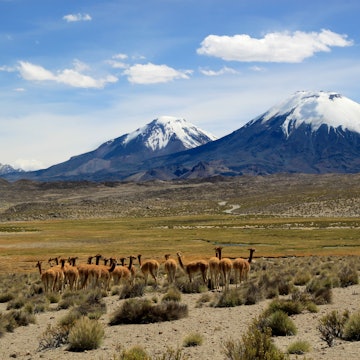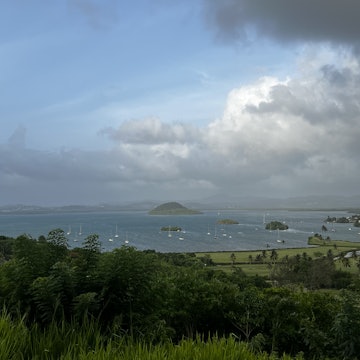

The Sunday market on the historic Lardo da Ordem is a highlight for any visitor to Curitiba. Vinicius Bacarin/Shutterstock
Brazil’s showcase “green” city, Curitiba (pronounced kr-uh-CHEE-buh) has long drawn kudos for its commitment to mass transit and innovative urban planning, much of it dating from the 1970s.
As the nation’s eighth-largest city, it’s also a surprisingly diverse place, with residents claiming Polish, Italian, Jewish and Japanese heritage. Although rarely touted as a tourist city per se, Curitiba merits an elongated visit for its parks, architecture and pioneering attempts to nurture genuine sustainability. Center stage is a necklace of clean, well-kept green spaces, with the centerpiece a truly elegant botanic garden. In between all the greenery, a small historic downtown district boasts handsome art nouveau and neoclassical buildings among the countless monolithic high-rises.
Curitiba is also an ideal base camp for exploring a rich hinterland. Monumental sandstone rock formations lie to the west, while coastal rainforest and surfing beaches await in the east.
Here’s everything a first-time visitor to Curitiba needs to know.

Curitiba is one of the best cities to visit next year. See our full list of Best in Travel 2025 winners.
When should I go to Curitiba?
Curitiba enjoys a spring-like climate all year long – which means that you’ll never find the stifling heat and mountain chill experienced in other parts of South America here.
Pleasant warmth and manageable amounts of rain make February and March the best months to visit. This also coincides with the city’s relatively modest (by Brazilian standards) carnival, a moveable feast that usually falls sometime in mid-to-late February.
Simply put, there’s no undesirable season to visit Curitiba. While it rains slightly more in summer (December to March), it’s a little cooler and drier in the winter (June to August). Retreating cold and mugginess in August makes for comfortable days. For cheaper hotel prices, consider the shoulder months of May and September.

How much time should I spend in Curitiba?
While Curitiba is commonly used as a staging post by travelers heading elsewhere, you could easily spend three days exploring the city and its environs.
Spend day one using the city’s celebrated public transport system to visit headliner sights such as the botanical gardens and the Oscar Niemeyer Museum.
Devote day two to a ride on the Serra Verde Express, one of the world’s most fabulous train journeys. The 10-hour round-trip includes a lunch stop in Morretes.
On day three, consider taking a bus west to Vila Velha State Park, returning to the city in the evening for dinner at deluxe Restaurante Manu.

Is it easy to get in and around Curitiba?
Curitiba’s Aeroporto Internacional Afonso Pena, 18km (11 miles) southeast of the center, is large and modern, offering regular connections to cities throughout Brazil as well as to Argentina and Chile.
The combined long-distance bus and train station forms a single three-block complex called the rodoferroviária, which sits a short distance southeast of downtown. A number of private bus companies have ticket counters for interstate and state travel. (Bus travel in Brazil is safe, comfortable and relatively efficient.) The train station sits directly behind the bus station, though the only regular service is the three-times-a-week heritage train (the Serra Verde Express) to Morretes.
Curitiba is famed worldwide for its much-studied and -copied rapid bus network, run by URBS. The cutting-edge bus system, which has its own dedicated lanes, utilizes integrated station pods known as tubos, which allow super-fast entry and exit. You can see how well the system works by catching a ride on any of the double-accordion, 270-passenger buses – many of which are now electric/biodiesel (Hibribuses) – for a flat fare of R$6 (US$1.60).

Top things to do in Curitiba
Savor the peace and tranquility of the Jardim Botânico
Away from the cacophony of the city center, Curitiba’s botanical garden is a sweeping, flower-filled haven enhanced by a small lake and centered around an elegant glass and metallic greenhouse containing tropical plants. Visitors can admire a formal French-style garden, before taking to a network of trails that wind through several wooded areas. Bring your own picnic, or visit the garden’s small café for a bite. You’ll want to linger a while.
Uncover the city’s roots in Largo da Ordem
Curitiba’s colonial heart consists of a small web of pedestrian-only brick streets anchored by the Largo da Ordem and lined with an eclectic selection of restored buildings, many of which now house stylish art galleries, pubs and cafes. Of note is the cupola-ed Presbyterian church, and the Casa Romário Martins, a small museum in the city’s oldest building that explores the work of Cândido de Abreu, Curitiba’s original urban planner and former mayor. On Sunday, the area fills up with a large art and artisan market containing more than 1000 stalls.
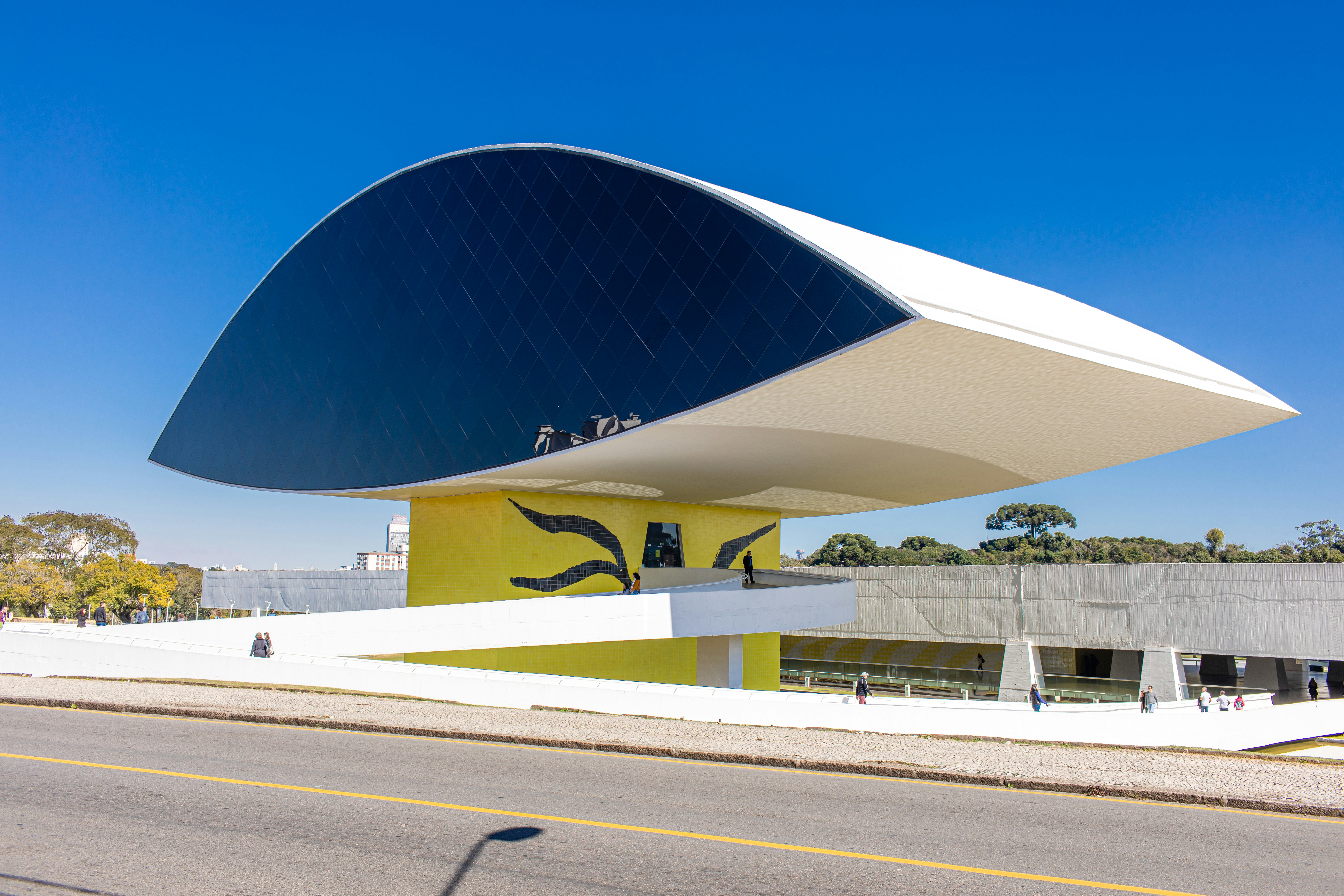
Embrace modernism at the Museu Oscar Niemeyer
Curitiba’s showcase museum is a striking modernist complex that has to be seen to be believed. This singular building was designed by and named for the famous architect responsible for conceiving many of the civic buildings in Brasília in the 1950s.
Open since 2002, the museum is dominated by an iconic eye-shaped tower that rises from an artificial pond, painted with whimsical dancing figures in shadowy black. The museum focuses mainly on visual arts and design, with rotating exhibits showcasing the work of Brazilian and international artists from 1900 onwards. The small but succinct permanent exhibition on Niemeyer and his work can be found in galleries in the tower.
Dig into a highly varied food scene
Curitiba boasts a wonderfully diverse culinary scene. In addition to all manner of excellent Brazilian restaurants (including plenty of churrascarias), Asian and Italian options are well represented. Leading the gourmet field is Manu, where nightly-changing tasting menus draw heavily on regional farm cooperatives and the restaurant's own organic garden. Among other accolades, Manu won the Flor de Caña sustainable restaurant award in 2023.
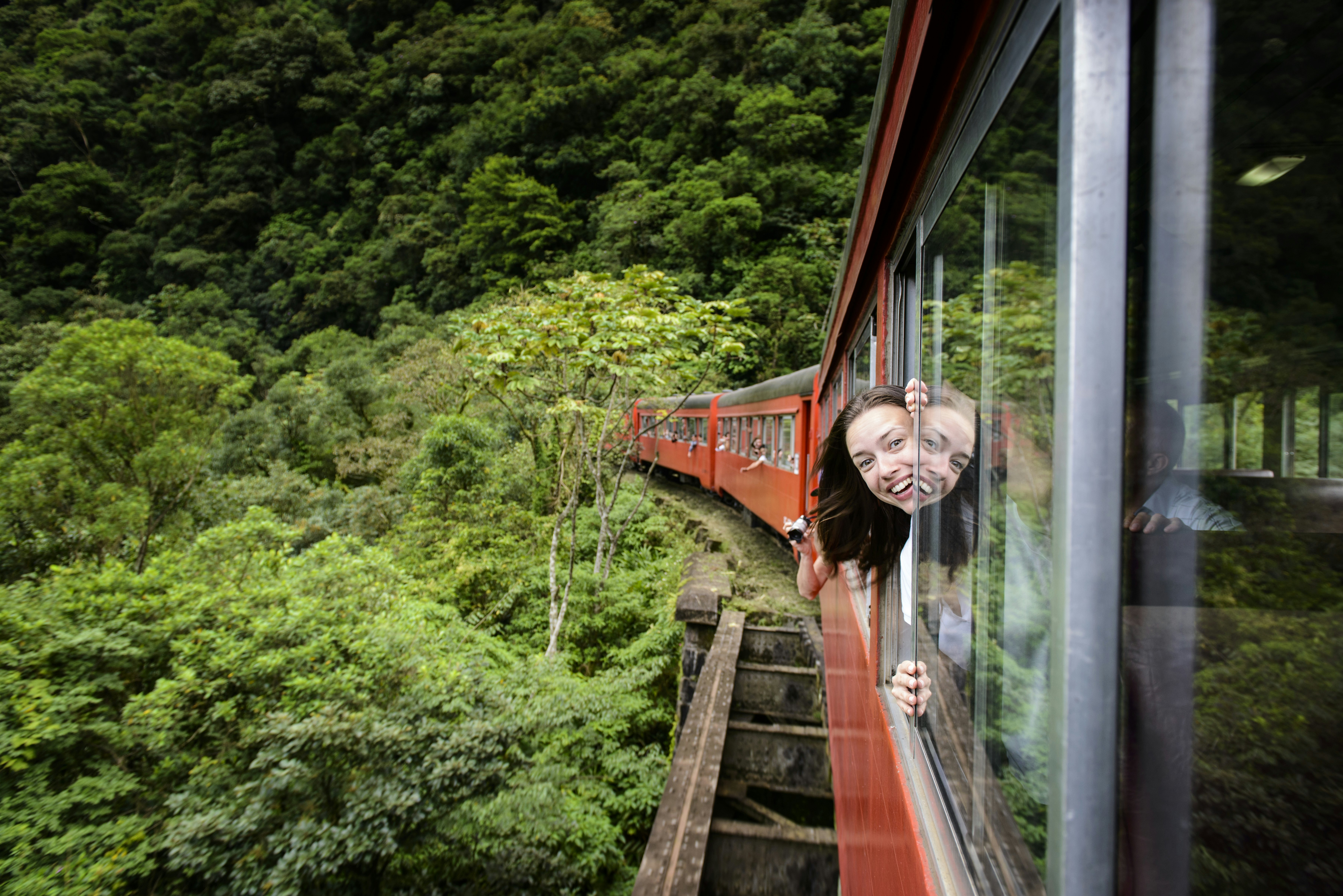
My favorite thing to do in Curitiba
Passenger trains aren’t common in Brazil – which makes a journey on the Serra Verde Express that much more fascinating. Running several times weekly through the Serra do Mar mountains, between Curitiba and the small gastronomic hub of Morretes, the line styles itself a heritage railway – with 1930s-style carriages, leather seats and shiny wood to match.
The last time I took the train, I booked my outbound ticket in “tourist” class but paid a bit extra for “boutique” class in a fancier Imperial carriage for the return. The 70km (43-mile) journey is more about scenery than speed. A short section during which the carriages chug over a precipitous viaduct feels as if the train is floating in the air.
How much money do I need for Curitiba?
Brazil is notably cheaper than countries in North America and Europe. And Curitiba, where the local economy is less tourist-driven than Rio or São Paulo, has many good accommodation deals. You’ll rarely pay much more than US$100 a night for a decent double room, even at top-ranked hotel brands like Radisson or Grand Mercure.
The city’s rapid bus network is great value, with a flat rate of R$6 for journeys anywhere in the city.
Mid-range hotel room for two: US$50–70
Museu Oscar Niemeyer entry: US$6
One-way ticket on the Serra Verde Express (tourist class): US$35
Public transport ticket: US$1.60
Burger: US10–12
Dinner for two in gourmet restaurant: US$60
Coffee: US$4
Bottle of craft beer: US$3

Frequently asked questions about Curitiba
Is Curitiba safe?
By Brazilian standards, Curitiba is relatively safe – something it has in common with most cities in the country’s south. Still, it’s best to take normal precautions by sticking to well-lit downtown streets after dark and never displaying obvious signs of wealth.
What innovations has Curitiba introduced to make it such a great model of sustainability?
Many. Aside from its bus network, Curitiba has 48 urban parks, a solar pyramid on a former landfill site, biodiverse honey gardens and a bike-sharing scheme focused on e-bikes.
Are there any good festivals in Curitiba?
Yes, especially relating to the arts. A theater festival – one of the largest in Brazil – is held in March, and the Olhar de Cinema film festival convenes in June. An arts Biennial kicks off in September of odd-numbered years, and a jazz festival draws crowds every December.
Are there any beaches near Curitiba?
The nearest beaches with good surfing are a 90-minute drive to the east around the small ferry port of Pontal do Sul. Even better beaches can be found on Ilha do Miel, a short boat ride from Pontal do Sul and best incorporated into an overnight or weekend trip from Curitiba.
Are there any worthwhile day trips from Curitiba?
Aside from the Serra Verde Express, you can make a popular day trip to the very different landscapes of the Parque Estadual de Vila Velha, 93km (58 miles) to the west. Paraná’s so-called “stone city” is made up of 23 aretinhas (sandstone pillars), formed over millions of years. The natural red monoliths – some taking recognizable shapes such as boots and bottles – create striking silhouettes against the blue sky and green foliage.
Within the boundaries of the park, visitors can also witness a series of water-filled furnas (craters) that are the result of underground erosion.
Vila Velha has an excellent visitor center and regular buses from Curitiba that will drop you close to the park entrance; book tickets ahead online.







